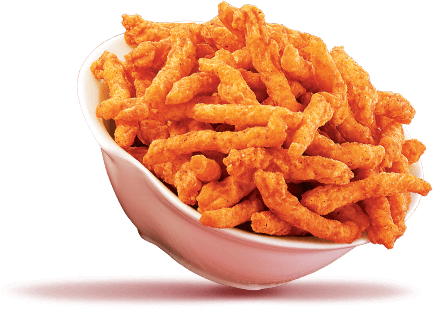
Understanding the ingredients used in Kurkure extrusion
The first step in the Kurkure extrusion process is to understand the ingredients used. Kurkure snacks are made from a mixture of cornmeal, rice meal, and a blend of mouth-watering spices. These ingredients are carefully selected to create the perfect balance of flavor and crunch. The cornmeal provides the base for the snacks, while the rice meal helps to enhance the texture and crispiness.
Once the ingredients are selected, they are combined with the spices. The blend of spices used in Kurkure snacks is a closely guarded secret, known only to a select few. This secret blend is what gives Kurkure its unique and addictive taste. The spices are carefully measured and added to the mixture, ensuring that each bite is bursting with flavor.
After the ingredients and spices are combined, they are ready to undergo the extrusion process. This is where the magic happens, as the mixture is transformed into the iconic twisty shape that we all know and love. But how exactly does this happen? Let’s dive into the role of machinery in the Kurkure extrusion process.
The role of machinery in the Kurkure extrusion process
The extrusion process is where the raw ingredients are transformed into the crispy and flavorful Kurkure snacks. This process involves the use of a machine called an extruder. The extruder is a complex piece of equipment that plays a crucial role in shaping the snacks and cooking them to perfection.
The extruder works by passing the mixture of ingredients and spices through a series of high temperature and pressure changes. As the mixture moves through the extruder, it gets cooked, expanding into a light and crispy texture. The extruder also shapes the Kurkure snacks into their iconic twisty form. This is achieved through the use of specially designed dies that give the snacks their unique shape.
But the extrusion process is not just about shaping the snacks. It also plays a vital role in cooking them. The high temperature and pressure changes in the extruder ensure that the snacks are thoroughly cooked, eliminating any rawness or unpleasant textures. This results in a snack that is not only delicious but also safe to consume.
Step-by-step process of Kurkure extrusion
Now that we have a basic understanding of the ingredients and machinery involved in the Kurkure extrusion process, let’s explore the step-by-step process in more detail.
Mixing: The first step in the extrusion process is to carefully combine the cornmeal, rice meal, and spices. This mixture is thoroughly mixed to ensure that the spices are evenly distributed throughout.
Feeding: Once the mixture is ready, it is fed into the extruder. The extruder consists of a hopper where the mixture is added, and a screw that pushes the mixture through the machine.
Cooking and shaping: As the mixture moves through the extruder, it is subjected to high temperature and pressure changes. This cooks the mixture and gives it the desired texture. At the same time, the extruder shapes the mixture into the iconic twisty form.
Cutting and cooling: After the snacks are shaped, they are cut into bite-sized pieces. These hot Kurkure strands are then rapidly cooled to ensure the perfect crunch. The cooling process also helps to set the shape of the snacks, ensuring that they retain their twisty form.
Seasoning: Once the snacks are cooled, they are ready to be seasoned. A secret blend of spices is added to the snacks, sealing in the irresistible flavors. The seasoning process is carefully controlled to ensure that each snack is perfectly seasoned, delivering a burst of flavor with every bite.
Packaging: The final step in the Kurkure extrusion process is packaging. The snacks are carefully packed into bags or containers, ready to be enjoyed by snack lovers around the world.
Quality control measures in Kurkure extrusion
In order to maintain the high quality and consistency of Kurkure snacks, strict quality control measures are implemented throughout the extrusion process. These measures help to ensure that every batch of snacks meets the brand’s standards of taste, texture, and safety.
One of the key quality control measures is the use of high-quality ingredients. The cornmeal and rice meal used in Kurkure snacks are sourced from trusted suppliers who adhere to strict quality standards. This helps to ensure that the snacks have a consistent taste and texture.
Another important aspect of quality control is the monitoring of temperature and pressure during the extrusion process. The extruder is equipped with sensors that constantly monitor these parameters, ensuring that the snacks are cooked to perfection. Any deviations from the desired temperature and pressure range are immediately flagged, allowing for adjustments to be made.
In addition to temperature and pressure monitoring, the snacks are also subjected to rigorous sensory testing. Trained sensory panels evaluate the snacks for attributes such as taste, texture, and appearance. This helps to ensure that every batch of snacks meets the brand’s standards of quality and flavor.
Common challenges and troubleshooting in Kurkure extrusion
While the Kurkure extrusion process is carefully designed to deliver consistent results, there are certain challenges that can arise. These challenges can affect the taste, texture, and appearance of the snacks, and need to be addressed promptly to maintain the brand’s reputation for quality.
One common challenge in Kurkure extrusion is the occurrence of breakage or crumbling during the cooking and shaping process. This can result from issues such as improper temperature or pressure settings, or problems with the extruder dies. To address this challenge, adjustments may need to be made to the extrusion parameters or the dies may need to be replaced.
Another challenge that can arise is the formation of air bubbles or voids in the snacks. This can affect the texture and crunchiness of the snacks, making them less enjoyable to eat. To overcome this challenge, the extrusion process may need to be fine-tuned to ensure that the snacks are cooked evenly and that air bubbles are minimized.
In some cases, the snacks may develop a burnt or off-flavor. This can occur if the temperature settings in the extruder are too high or if there are issues with the seasoning process. To troubleshoot this issue, the temperature settings may need to be adjusted, or the seasoning process may need to be reevaluated.
Innovations and advancements in Kurkure extrusion technology
The process of Kurkure extrusion has come a long way since its inception. Over the years, there have been numerous innovations and advancements in the technology used to create these delicious snacks. These advancements have not only improved the efficiency and consistency of the extrusion process but have also opened up new possibilities for flavor experimentation.
One notable innovation in Kurkure extrusion technology is the use of twin-screw extruders. These extruders have two screws instead of one, which allows for better mixing and cooking of the ingredients. The use of twin-screw extruders has resulted in snacks that have a more uniform texture and flavor.
Another advancement in Kurkure extrusion technology is the development of advanced control systems. These systems use sensors and artificial intelligence to monitor and adjust the extrusion process in real-time. This helps to ensure that the snacks are cooked to perfection, regardless of variations in raw materials or environmental conditions.
In recent years, there has also been a focus on reducing the environmental impact of the extrusion process. This has led to the development of energy-efficient extruders and the use of sustainable packaging materials. These innovations not only benefit the environment but also contribute to the overall sustainability of the snack industry.
Safety considerations in Kurkure extrusion
Ensuring the safety of consumers is of paramount importance in the Kurkure extrusion process. The snacks undergo stringent safety checks to ensure that they are free from any contaminants or harmful substances. These checks are implemented at various stages of the extrusion process, from ingredient sourcing to packaging.
One of the key safety considerations is the sourcing of raw materials. The cornmeal and rice meal used in Kurkure snacks are carefully selected from trusted suppliers who follow strict quality and safety standards. This helps to ensure that the snacks are free from any contaminants or allergens.
During the extrusion process, the snacks are subjected to high temperatures, which helps to eliminate any potential pathogens or harmful microorganisms. The extruder is designed to reach and maintain temperatures that are sufficient to kill these microorganisms, ensuring the safety of the snacks.
In addition to temperature control, the extrusion process also involves the use of food-grade lubricants and cleaning agents. These substances are carefully selected to ensure that they do not pose any health risks to consumers. Regular cleaning and maintenance of the extruder also help to prevent the buildup of contaminants or residues.
Applications and market trends of Kurkure extrusion
Kurkure extrusion technology has found widespread applications in the snack industry. The process is not limited to the production of Kurkure snacks alone but has been adapted to create a variety of other snack products. These include extruded snacks such as cheese balls, potato sticks, and flavored rings.
The market for extruded snacks is growing rapidly, driven by factors such as changing consumer preferences, urbanization, and the increasing popularity of snacking. Consumers are looking for convenient and tasty snack options that can be enjoyed on the go, and extruded snacks fit the bill perfectly.
In addition to the traditional market, there is also a growing demand for healthier and more nutritious snack options. This has led to the development of extruded snacks that are made from alternative ingredients such as whole grains, legumes, and vegetables. These snacks offer a healthier alternative to traditional extruded snacks, without compromising on taste or texture.
The market for extruded snacks is also witnessing a surge in innovation and flavor experimentation. Snack manufacturers are constantly introducing new flavors and combinations to cater to the diverse tastes of consumers. This has resulted in a wide range of exciting flavors, from spicy and tangy to sweet and savory.
Also read this : How does a Kurkure extrusion machine turn raw materials into the final crispy snack product?
Conclusion and future prospects of Kurkure extrusion technology
In conclusion, the process of Kurkure extrusion is a complex and fascinating journey that transforms raw ingredients into the addictive snacks we all love. From the carefully selected ingredients to the state-of-the-art machinery, every step in the extrusion process is designed to deliver a burst of flavor and the perfect crunch.
The advancements in Kurkure extrusion technology have not only improved the efficiency and consistency of the process but have also opened up new possibilities for flavor experimentation. With the growing demand for snacks that are convenient, tasty, and nutritious, the future prospects of Kurkure extrusion technology are bright.
As snack manufacturers continue to innovate and adapt to changing consumer preferences, we can expect to see even more exciting flavors and snack options in the market. Whether it’s the classic Kurkure snacks or the new and innovative extruded snacks, one thing is for sure – the process of Kurkure extrusion will continue to captivate our taste buds and keep us coming back for more.
